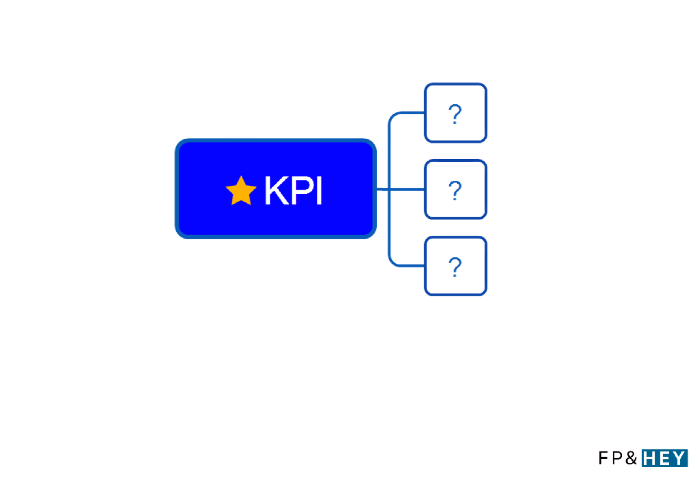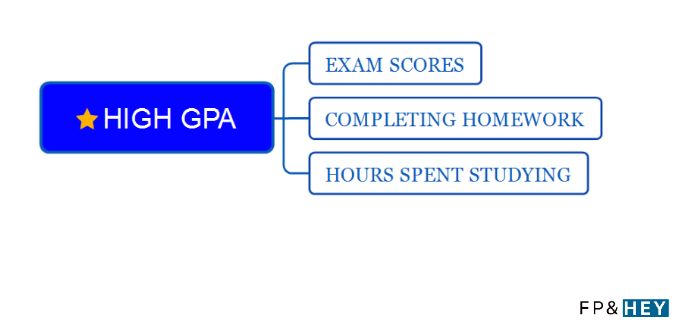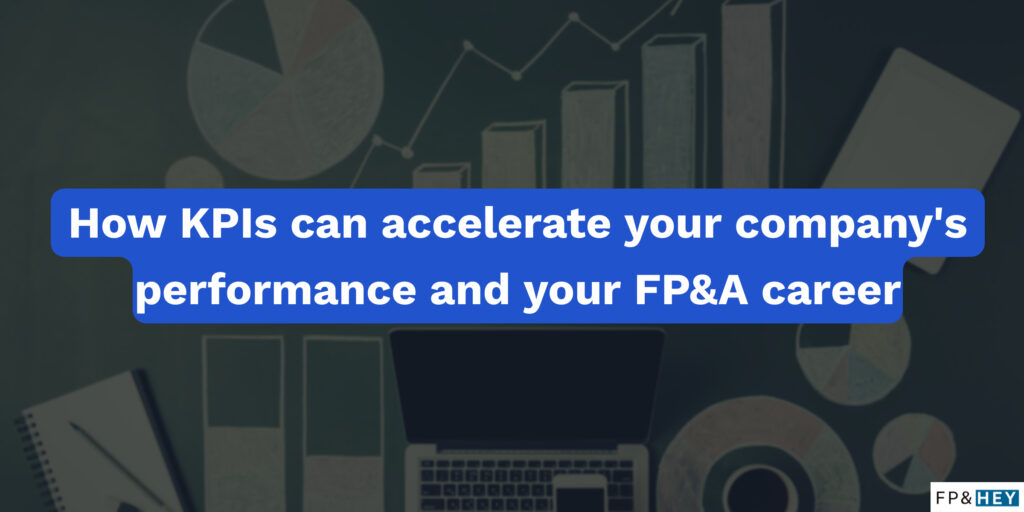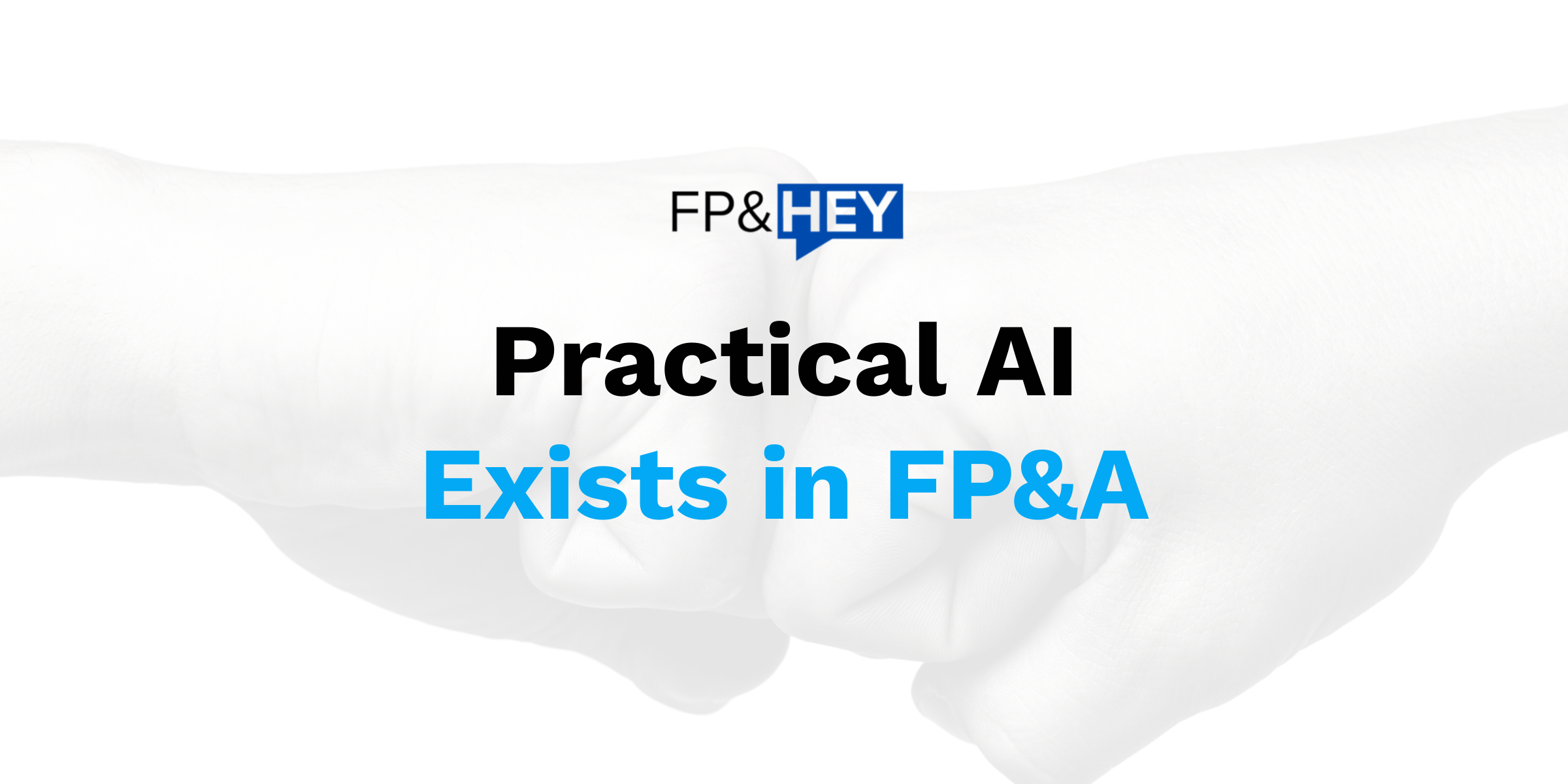👋 Hey there,
Some big milestones to share with you.
We launched our brand new website, AND we just hit 1k subscribers!
THANK YOU to our awesome readers!
We have tons more planned in the pipeline to help level up your FP&A career (and not just articles). 💪
Our previous article on profit forecasting was also just featured on Causal’s resource page (read it here).
Now onto today’s topic…WTF is a KPI?
Today’s topic is on KPIs and how they can help accelerate your company’s performance and your FP&A career.
This post covers the following:
- What KPIs are
- Why KPIs are important
- How to establish and manage KPIs
Confused on what a KPI stands for?
Keep reading, we have you covered (we won’t cover WTF, you know that one).
Now let’s dive in.
What is a KPI
The business world loves a good acronym.

KPI stands for Key Performance Indicator.
It’s a number.
But not just any random number.
It’s a performance number that’s measurable over time for a specific objective.
This number is important because it allows your company to quantify its long-term goals (aka strategy).

KPIs can help your company:
- Set a long-term strategy (long-term = 1 year or longer)
- Communicate a long-term strategy (numbers are a universal language)
- Measure progress towards key goals and objectives (define winning and losing)
Remember, FP&A is all about managing future results.
And helping your company achieve its KPI is exactly that.

So what’s the complicated formula in creating a KPI?
Examples of KPIs
It’s actually not that complicated.

KPIs should be SIMPLE so everyone understands them.
You already have experience with KPIs in your personal life.
Let’s say you are a student that wants to graduate with high honors.
Guess what your KPI is?
Answer: a high GPA (grade point average)
Think of it like a north star of your company (or academic career). ⭐
Every department in your company (R&D, Sales, Marketing, Operations, Legal…you name it) should be able to reference this KPI when making their own strategic decisions.
3 essential company KPIs include:
- Customers (consumers or businesses buying your stuff)
- Revenue (the money customers pay for your stuff)
- Profit margin (the money you make from customers buying your stuff)
Your job as an FP&A professional is to communicate goals (KPIs) to your departments and translate them into everyday business activities.
🔥TIP: read this to learn how to communicate financial information
This helps your departments and company achieve long-term goals (KPIs).
But you’re communicating more than just KPIs.
True or False: All numbers are KPIs?
Answer: a big fat NO

KPIs are NOT metrics (which are also important)
Yep, more vocab words coming your way.

KPI is to long-term strategy as metric is to everyday business activities.
They are both numbers.
The difference between them is what they are used for.
As a student trying to achieve a high GPA (KPI), you would track metrics like:
- Exam scores (metric measured after every test)
- Completing homework (metric measured after submitting assignments)
- Hours spent studying (metric measured every day)
Achieving high exam scores (metric) contributes to ➡ high GPA (KPI).

And a high GPA (KPI) leads to honors recognition (long-term goal).

Great metrics have a direct correlation to KPIs.
If your company’s goal is to double customer count (KPI), 3 metrics to support that KPI could be:
- New customers (customers recently added)
- Churn customers (customers that left)
- NPS aka Net Promoter Score (a way to assess customer health)
And you, as an FP&A professional, can help departments understand why all of these numbers matter.
Why are KPIs (and metrics) important
KPIs (and metrics) aren’t just lip service.
As an aspiring honors student, you need to measure results to manage results.
The same goes for your company.
Here are 3 reasons why below.
1. Autonomous decision making
What if every single decision at your company required executive approval?

That would not be a good use of time for you or your executives.
Having KPIs (and metrics) help a team move about that cabin without asking if they can use the bathroom or order food (in plane passenger terms).
In business terms, it allows teams to make decisions with confidence like:
- Spending money
- Managing customer relationships
- Hiring
Back to you as a student, you were invited to a swinging party Thursday night.

The question you should ask yourself before attending is:
Did you study enough hours today and finish your homework for the week?
✔️ If yes, then go bust a move
❌ If no, then recognize going may negatively impact your GPA (KPI)
Making decisions gets easier with KPIs and the metrics to support them.
FP&A is not about saying NO—it’s about helping people make informed decisions.
🔥TIP: read this to help Sales make informed decisions on discounting.
2. Continuous improvement
You and your fellow coworkers are not perfect, and that’s totally normal.

Instead of perfection, focus on improving a little bit every day.
Small wins = BIG difference over a long period of time.
Especially when your performance is falling short of your goals (metrics).
As an aspiring honors student, you should pay close attention to:
- Grades when available (focus on improving the lowest ones)
- How you spend your time every day (change habits if needed)
- Homework completion every week (complete outstanding assignments)
If any of the above are tracking below your expectations, time to make a change.
In FP&A, it is NOT your job to report bad results and then drop the mic.

A great FP&A professional brings solutions that can turn bad results into KPI-achieving results.
FP&A is a team sport.
Help your team win. 💪
3. Team alignment
Herding cats is hard. (cats = many tasks and people doing them)

Just as hard is getting an entire company to achieve a strategic goal (KPI).
As a student, you control what things you focus on and how much effort you put into those things.
And you definitely have other responsibilities that are important too like:
- Spending time with friends
- Physical activity
- Family commitments
You can do all of the above by aligning your metrics (exam grades, homework, study time) that feed your KPI (GPA) with time spent doing these other activities.
Your time is precious, so manage it accordingly.
FP&A is front and center in all departments because we have all the data (KPIs and metrics).
Help your departments spend their time wisely, so they can make a big KPI (and metric) impact.
What are the steps to creating and managing a KPI
Anyone can come up with a long-term goal and put a number to it.

The hard part is executing a plan to achieve this goal.
Back to you as a student. 👨🎓
Let’s create and manage your KPIs (and metrics) step-by-step.
Step 1: Set clear objectives (use the SMART framework)
The SMART framework to set a goal is a great place to start (more info here).
SMART = Specific, Measurable, Attainable, Relevant, Time-bound- SPECIFIC: You want to get a degree in accounting with high honors, so you can land a job as an accountant (btw accountants make great FP&A professionals).
- MEASURABLE: You will use a combination of exam grades, homework participation, and daily time tracking to measure your effort and results.
- ATTAINABLE: Obtaining a degree has been done by others, and you’ve completed coursework before.
- RELEVANT: You lack accounting knowledge, and this goal will give you that knowledge.
- TIME-BOUND: A degree will take 4 years, that is when you will obtain it.
Now your goal is SMART.

Let’s get down to numbers.
Step 2: Choose available and relevant measurements
Time to measure numbers.
Let’s start with KPIs.
You have two long-term goals that have KPI written all over them:
- To obtain a degree (goal) requires 120 credit hours (KPI)
- To achieve high honors (goal) requires a 3.8 out of 4.0 GPA (KPI)
These KPIs can be measured at the end of every term using your report card.

Now let’s come up with 4 metrics you can measure ongoing to keep you on track:
- Test scores (provided after a test is taken)
- Daily study hours (measured once a day)
- Homework completion (measured once a week)
- Class attendance (measured daily)
Now you’re armed with metrics that can hold you accountable.
Step 3: Set targets and create a reporting cadence
Being accountable means achieving results that meet or exceed your target (KPIs and metrics).
You already have your KPI targets (120 credit hours, 3.8 GPA).
Now create metric targets that will help you achieve these KPI targets:
✅ Test scores = 90+
✅ Daily study hours = 2+
✅ Homework completion =100%
✅ Class attendance = 100%
Constantly measure your results against these targets.
KPIs can be reviewed less frequently (like at the end of your semester).
Metrics can be reviewed more frequently because they’re designed to help you manage your ongoing performance (daily, weekly, monthly, and after tests).
But what happens if your results are below target? 🤔
Step 4: Continuously improve
You can’t predict the future, and sometimes things happen that take us off course.
The trick to achieving a long-term goal (KPI) is making adjustments along that journey.
How do you know what adjustments to make?
By measuring your metrics.

What if your test scores are below 90?
Check your study hours.
Maybe you’re falling short (because of dance parties).
OR underestimated the amount of studying you should be doing (raise your target hours).
Either way, make a change that will lead to achieving your target test score of 90+ (metric), which will lead to you graduating with a 3.8+ GPA (KPI).
And before you know it.

You’ve graduated (120 credits) with honors (a 3.8+ GPA). 💪
Conclusion: You know KPIs, now help your company set and achieve them
Congrats! You now understand the concept of KPIs (and metrics).
And you can use them to help yourself AND your fellow departments achieve goals.
That will build up your reputation as the person that achieves results.
Your reputation is like currency—keep adding to it a little each day.
Because when people have future FP&A job opportunities, guess who they’ll come calling?
YOU, the person with a great reputation that will help them achieve their goals.
Ready to achieve company and career long-term goals?
Let us know by emailing us with your experiences and thoughts.
Also, as always we’re looking for fresh new ideas and topics to help you grow your FP&A career. We read every message.
Now go have fun making an impact on your business and your career!
Cheers,
Drew & Yarty
PS: This post is 100% human-made 💪





